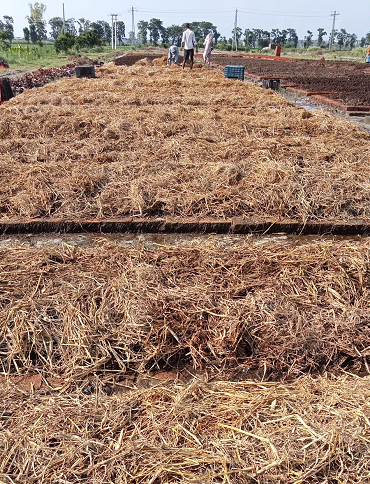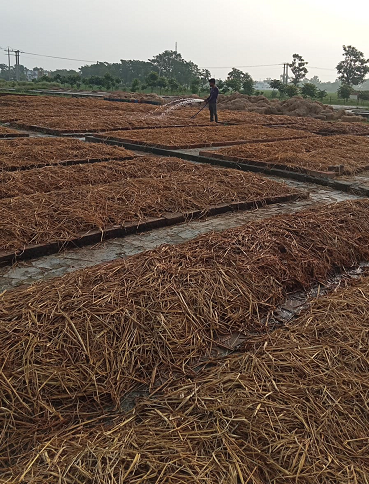Mastering the Art of Vermicompost Harvesting: A Comprehensive Guide
VVermicomposting, a natural alchemy powered by earthworms, holds the key to transforming organic waste into nutrient-rich gold for our soils. However, achieving the perfect harvest of this valuable vermicompost requires finesse and careful execution. From the preparation stages to the final storage, each step demands attention to detail. Let’s delve into the art of vermicompost harvest and learn the intricacies that ensure a bountiful yield.
Timing is Crucial: Preparing for Harvest
In the vermicomposting journey, timing plays a pivotal role. To begin the harvest process, it’s essential to cease watering the vermi-beds at least a week before the intended harvest date. This gradual reduction in moisture prompts the earthworms to migrate towards the center of the bed, making it easier to collect the compost without disturbing their habitat.
Ball Formation: A Sign of Earthworm Harmony
Observant vermicompost practitioners may notice an interesting phenomenon as the harvest date approaches. Earthworms, in a show of unity, gather together and form spherical clusters in several locations within the pit. These clusters, or balls, are a natural manifestation of their behavior as they prepare for the impending change in their environment.
Harvesting Technique: Careful and Considerate
To initiate the harvest, gently remove the earthworm balls and place them in a container. However, the process is not always as straightforward as it seems. In most instances, manually disturbing the top layer of the vermi-bed is necessary to extract the compost beneath. As you disturb the top layer, the earthworms instinctively move downward, allowing the compost to be separated.
Replenishment and Rescheduling: The Continuation of the Cycle
With the vermicompost collected from the top layers, it’s time to nurture the cycle anew. Replenish the vermi-bed with fresh feed material to reschedule the composting process. This step ensures a continuous supply of nutrient-rich vermicompost while maintaining a sustainable environment for the earthworms.
Sieving and Storage: Preparing the Precious Yield
The collected material must undergo a sieving process to separate the refined vermicompost from any remaining organic matter. Passing the material through a two-millimeter sieve yields the prized vermicompost, which is then carefully stored in polythene bags. This meticulous storage ensures that the vermicompost retains its quality until it’s ready to be applied to the soil.
Alternative Methods: Adaptation for Efficiency
While the pit/heap method is a well-known approach, there are alternatives that can be equally effective. Vermicomposting can be accomplished in wooden boxes or brick columns using a similar process. These variations offer flexibility and can be tailored to the available resources and space.
In-Situ Vermicomposting: Taking It to the Field
Expanding the horizon of vermicomposting, in-situ application involves directly applying vermicompost to fields. This approach involves spreading 5 tonnes/ha of vermicompost followed by layers of cow-dung and farm waste. Regular irrigation at two-week intervals nurtures the composting process and enhances soil fertility.
Conclusion
The journey from organic waste to nutrient-rich vermicompost is a delicate interplay of timing, technique, and care. By understanding the nuances of the harvest process, practitioners can ensure the optimal yield of high-quality compost that contributes to soil health and sustainable agriculture. As vermicomposting continues to gain momentum as a cornerstone of eco-friendly waste management and soil enrichment, mastering the art of harvest becomes an essential skill for those seeking to harness the potential of earthworms in nurturing a greener, more sustainable future.
OUR RECENT PROJECTS
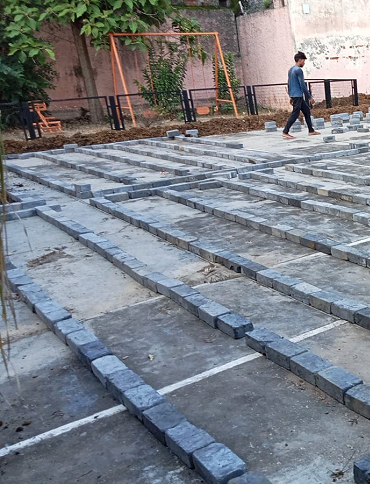
BED PREPARATION
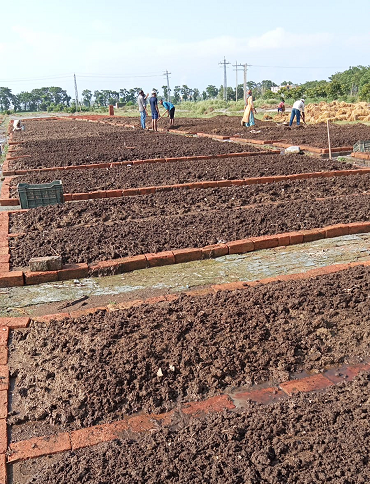
BED INSTALLATION
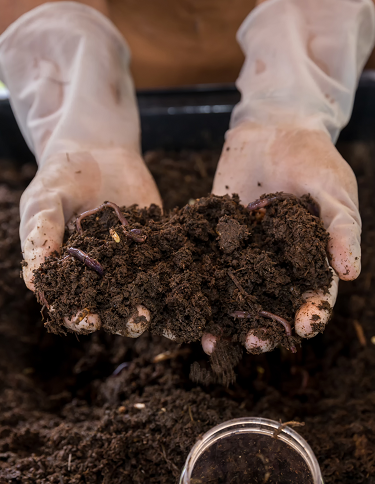
EARTH WORMS
